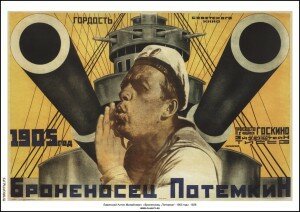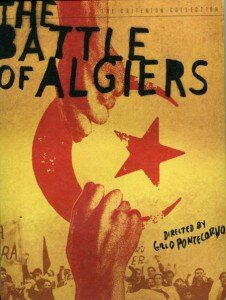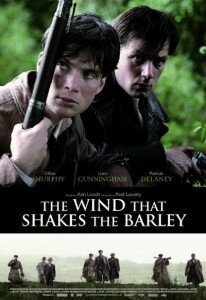The Discriminating Dissident’s Essential Movie List
1. The Battleship Potemkin (1925)
Adored by film students and dumb charades aficionados alike, The Battleship Potemkin is one of those game-changing films that, even today inspires film-makers. For the first time, film-makers took the camera off its tripod and explored angles. This film also experimented with montages and film editing techniques to maximise audience empathy.
Apart from its technical achievements, it is important to watch Potemkin in the right context. When this movie was made, the Tsar of Russia had been dead for 8 years and Stalin was consolidating his power. It is also important to remember that Potemkin was a government supported propaganda film; every single frame was designed to have the greatest emotional impact on its audience. And it achieves that objective most effectively. I haven’t felt such socialist stirrings since my Law and Poverty course in college. I began to see Rasputins, Tsar Nicholases and Stolypins among the characters that represented the Establishment.
In 1905, the worker uprising had begun. Disgruntled sailors onboard the imperial battleship, Potemkin want to join the workers. But the straw that finally broke the camel’s back was rotten meat. Putrid, maggot-ridden meat is served to the sailors in their borscht, despite their vehement protests. When the sailors refuse to eat it, the Captain threatens to have them all shot. But one sailor, Vakulinchuk makes an impassioned speech and the sailors are so moved that they take up arms. But in the ensuing fight, Vakulinchuk is killed. He instantly becomes a martyr, the man who was “killed for a plate of soup”.
So shaken are they by his death that even the people of the port town, Odessa, flock to see this martyr’s body. Suddenly, all the people who never wanted to get drawn to either side of the revolt realize that the battle lines have been drawn by Vakulinchuk’s death and have to pick a side.
The movie’s most iconic sequence, The (dreaded) Staircase of Odessa, where a robot-like troop of Cossasks brutally murder the townspeople, including women, children and the infirm is horrifying and riveting. As I watched it, I thought, “Clichés much?”: woman carrying dead son, pram with baby rolling down a set of stairs, weeping old woman, the unfeeling military types marching on relentlessly. Except, you realize that all these devices were used for the first time ever in the history of cinema. It is the cinematic equivalent of watching the creation of Adam and Eve, and it takes your breath away.
2. The Battle of Algiers (1966)
Really, do yourself a favour and don’t watch this movie. Unless you have three sleepless nights (and three ensuing unable-to-work days) to spare. Damn you, Gillo Pontecorvo with your exquisite film-making technique and Ennio Morricone with your haunting soundtrack. If that scene where a man is tortured to reveal an insurgent hideout and then just sits there, with his dark, tear-filled eyes burning with hate and shame for himself keeps me awake for one more night, you will owe me a job.
Often called the greatest revolution movie ever made, The Battle of Algiers is about clashes in the city of Algiers between the native Algerians (a mostly Arab population) and French settlers during the Algerian War of Independence. But the depiction is so brutally realistic that it could have been a revolutionary war set anywhere in the world, at any point in history. In fact, the Holy Wikipedia says that this movie is regularly screened for counter-revolutionary and armed forces personnel to understand the nature of guerilla warfare.
Perhaps the most refreshing feature about this movie was that, it practically danced on a knife edge between the two sides. The movie never makes any sort of judgment about whose reasons for murder and arson were better. You do what you do for what you believe in, and you must accept all the consequences (this is precisely why I excluded movies about revolutionaries in this series; film-makers often get infatuated by their characters and feel compelled to rose-tint them a little bit).
War is not pretty and rarely fair. I believe it was Chairman Mao who said, “Revolution is not a tea party”, and how right he was. If you watch this film expecting some sort of justification for armed rebellion or torture by armed forces, expect none. This movie was designed to make you uncomfortable about any side you pick, because there are always consequences. Innocent infants and mute spectators die on both sides and fresh-faced, earnest young men are among the guerillas and the soldiers. The revolution leader is a brilliant strategist who makes zero moving speeches five minutes before the climax and the head of the counter-revolutionary force is not the standard issue army sadist (I’m looking at you, Colonel Quaritch), but was once part of the French Resistance himself.
A number of scenes are bound to strike a chord, even today. The water boarding scenes and some scenes which were awfully reminiscent of the 2008 Mumbai attacks, are a reminder that more than 50 years later, almost nothing has changed.
3. The Wind that Shakes the Barley (2006)
If you were in a rebel army and found a traitor in your midst, you would have him shot, right? But what if the traitor was your lifelong friend? Or your brother? What of your principles then? This pain of so many families and friends opposing each other during the Irish Civil War in the early 1920s is not an uncommon theme in Irish literature.
The Wind that Shakes the Barley is the story of two brothers, Teddy and Damien who are leaders of a brigade in the Irish Republican Army (IRA). But once the Anglo-Irish treaty of 1921 is signed, they find themselves on opposite sides. Although sympathetic to the IRA and their demands of complete independence, this movie’s great strength was the heart it brought into a political event. The feuding brothers are an obvious allegory of the Irish Civil War, but that doesn’t make their relationship clunky or unsubtle, but their affection for each other and the strength of their convictions are extremely believable.
I always assumed that the British soldiers were dickish towards only brown people and orientals. However, if this movie is anything to go by, apparently this was a general attitude problem in the British army. Say what you will, but they really knew how to work their divide and rule policies. An enemy who is different is easily opposed. But fighting your neighbours and third cousins? Messy. They let the IRA have everything within an inch of their demands, then sat back and watched them destroy themselves over that inch. Some felt that this was a chance for peace in Ireland; others felt that this was just putting a calico frock and lipstick on a pig. And this sort of thing happens on a regular basis. The Suffragette movement in Britain, the Indian National Movement and so many others suffered the same problem. Everybody starts off with the same oaths of freedom and liberty, except, nobody can actually agree on what those words mean.
I’ll leave you to ponder these perturbing questions over a hearty Irish rebel song.



No comments:
Post a Comment